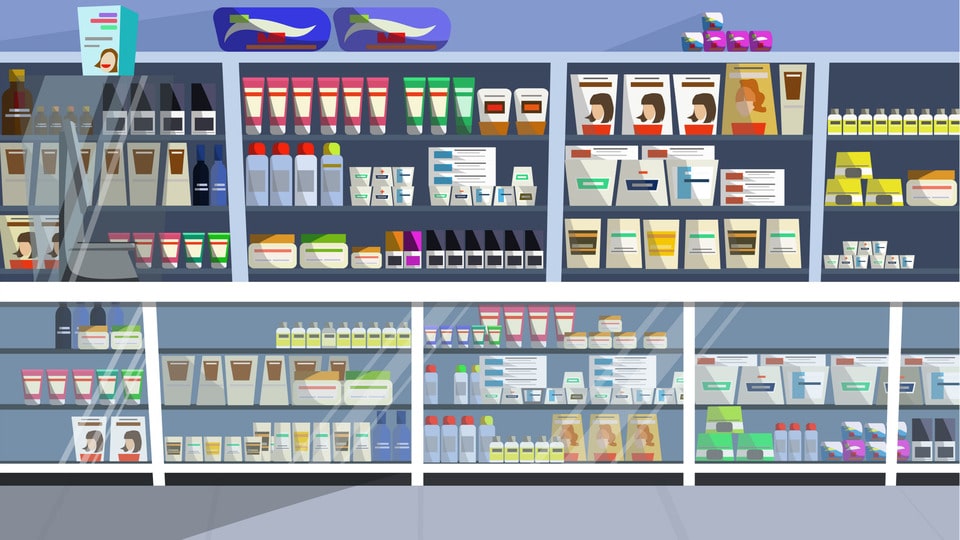Most independent pharmacies stock their shelves with merchandise that is designed to help patients save time and money. Purchasing other necessities in one stop while also picking up your prescriptions is one of many conveniences offered by independent pharmacies. Often times, a unique selection of merchandise can even draw people into your pharmacy when they don’t have a prescription to pick up, and having the right mix of product categories can increase the average ticket size. We all know prescription reimbursements are down across the board for independent pharmacies, but if we can make up for some of those losses, then pharmacies will be in a much better position for the future.
All of this equates to a more profitable “front end” in your pharmacy, and if done the right way, it can increase revenue and help combat or offset DIR fees and low reimbursements. As reimbursements continue to shrink and PBM fees continue to grow, focusing on a better selection of merchandise in your independent pharmacy tailored towards your local customer demographics is key. Thanks to Datascan’s vast network of independent pharmacies using its POS software to handle all consumer transactions, we’re able to uncover some trends in the purchase behavior of customers, and we’ve compiled them here for your review. We encourage pharmacy owners to take advantage of the reporting capabilities and inventory monitoring functions to better analyze specific store trends and patterns. Inventory control can be overwhelming to pharmacy owners but by utilizing the tools within Datascan’s pharmacy management and point of sale systems it can be a relatively painless endeavor.
Let’s take a look at some of the best-selling front-end merchandise categories we see trending in our pharmacies.
1. Vitamins & Herbal Supplements
Vitamins are a great up-sell for many of our pharmacies. According to a 2019 survey conducted by the Harris Poll on behalf of the American Osteopathic Association, 4 in 5 American adults (86%) take a vitamin or supplement. Selling vitamins and herbal supplements in your pharmacy can require a bit of education; learning about supplements and which items appeal to the demographics you serve. You never want to lock up cash in excess inventory and using Datascan’s Point of Sale system will help you understand the needs of your customer base and figure out which vitamins and supplements sell best in your market. It’s much easier to capitalize on patient interest as opposed to trying to generate interest in a particular item. For example, health-conscious patients, patients on special diets, and patients with nutrient-depleting prescription items are often very interested in OTC vitamins and supplements. Some common nutrient-depleting drug classes include statins, ace inhibitors, beta blockers, and NSAIDS. Understanding depletion helps you to better recommend supplements to offset or compliment the drug class. For example: Coq10 goes with statins, and zinc goes with ace inhibitors. It’s also important to focus on the time of year and take advantage of supplements people typically use to better care for themselves. For example: during cold and flu season we see a tremendous upswing in Vitamin C, elderberry, and echinacea. Creating departments and categories in Datascan’s Point of Sale system make it easy to generate reports and pull data on what items sell and when.
2. Seasonal Items
Seasonal items sell incredibly well in our pharmacies. Seasonal items range from gifts and decorations during holidays like Christmas and Valentine’s Day, all the way to outdoor toys and sunscreen during summer months. Using Datascan’s Point of Sale software to create a seasonal department, and then taking it even further to create specific categories makes it incredibly easy to order properly, plan and promote, and generate much larger profits for your pharmacy. So many pharmacies order inventory by guesstimating how much of an item they will need which ultimately results in inventory surplus or out-of-stock items. We want our pharmacies to make data-driven decisions to find the optimal inventory numbers using their pharmacy management software to order appropriately. With Datascan, you can easily track purchase trends for items throughout the year so when it comes time to place a seasonal order you’re not left with a BOGO sale to try and get rid of overstock.
3. Durable Medical Equipment
Durable Medical Equipment, or DME, is another great area to get into and is a very popular pharmacy merchandise category. Durable medical equipment is any medical device used in the home to aid in a better quality of living. DME includes but is not limited to wheelchairs, walkers, canes, commodes, crutches, ventilators, hospital beds, and much more. Often these types of items are difficult to find locally and many patients don’t have the luxury of waiting for an online order. While in most cases pharmacies don’t necessarily find a need to overstock these items, it’s a smart idea to maintain a limited supply of in-stock DME for patients looking for these hard-to-find items. Creating inventory categories within your point of sale system can help you track purchase trends and history for items in your pharmacy, making it easier to manage a smart inventory threshold. Correctly categorizing your DME in the point of sale system allows you to maximize sales while also avoiding over-ordering.
4. Essential Oils
There is a rise in the number of Americans using natural and organic products like essential oils. Essential oils have many uses and are able to be applied topically, ingested orally, and of course diffused into the air. According to a report by Grand View Research Inc., the US Essential Oil market is projected to reach $7.3 billion by 2024. The demand for products like essential oils has proven this to be another profitable category for independent pharmacy. To see success and profitability in essential oils, education is important. There is a variety of brands available, and a myriad of uses for most oils so educating yourself and your pharmacy staff on uses will help them to properly recommend products to your customers. Understanding the needs of your customer base and building a stock around that need will help reduce overstock and increase demand. Using the reporting platform in Datascan’s Point of Sale system can also pinpoint your biggest sellers, slowest movers, and provide insight on which items could be offered as special or custom order only.
5. CBD Oils
Many essential oil companies also offer their own lines of CBD products, which, as a category on its own, is incredibly profitable. Like essential oils, CBD has tons of uses, both orally and topically. Many patients are seeing improvements in their anxiety, pain, and sleep as a result of using CBD. Patients seek advice from their local pharmacists on proper use and dosage of CBD products. Like essential oils, CBD requires a bit of education but there are many resources available. Managing inventory, tracking sales, and promoting products is simplified by using the technology in Datascan’s Point of Sale software.
Building a bigger and more robust front-end in your independent pharmacy helps cultivate business from many aspects. You have the potential to attract new customers who may have not even stopped into the pharmacy, and you open the door to bigger sales with existing pharmacy patients. A clean and well-managed OTC and front-end invites shoppers to spend in your store and you have the tools to manage this right in your Datascan Pharmacy Software and Point of Sale system. Take advantage of your reporting capabilities and learn more about your store and purchase trends. Apply that information when it comes time to place orders, build store sales and promotions, and better prepare for your future.










